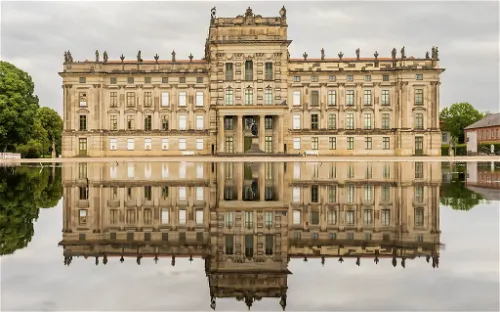Ludwigslust Palace and its collection
Ludwigslust Palace, situated in the city of Ludwigslust in Mecklenburg-Western Pomerania, Northern Germany, has a rich history that dates back to its original use as a hunting lodge. This historical context adds a unique charm to the palace, making it an interesting destination for tourists who appreciate history and architecture.
Ludwigslust Palace as a Political Center
The palace was restored by Charles Leopold of Mecklenburg-Schwerin, who transformed it into a luxurious retreat from the ducal capital, Schwerin. From 1765 to 1837, the palace served as the government seat of the Duchy of Mecklenburg-Schwerin. This period of the palace's history is significant, as it highlights the palace's importance in the region's political landscape.
Architectural Design of Ludwigslust Palace
The palace was rebuilt in the late Baroque style based on plans by Johann Joachim Busch. The design features a building in the shape of an E, with a slightly elevated corps de logis that seems to penetrate the wings of the building from front to back. This architectural style and design are unique to Ludwigslust Palace, making it a fascinating destination for tourists interested in architecture and design.
History & Anthropology Castle Historic house


























































